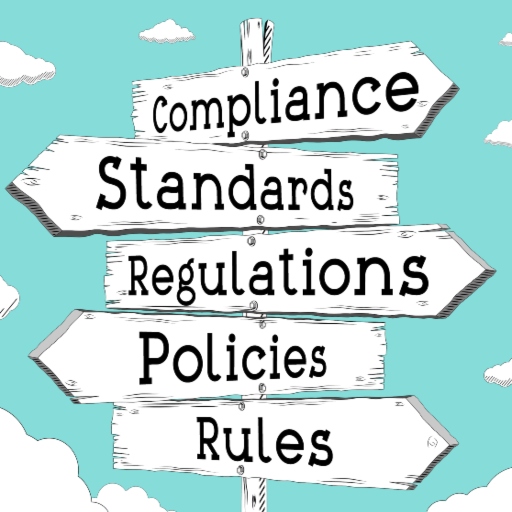Transparency laws—those unyielding corporate accountability sentinels—loom large over U.S. industrial and manufacturing enterprises, demanding clarity where obfuscation might otherwise reign.
Financial disclosures, environmental impact revelations, labor practice reports—every corner of the industry pulsates with regulatory scrutiny.
Compliance isn’t optional. It’s survival.
Fail, and the consequences range from financial hemorrhaging to a credibility death spiral. Success? A tenuous grip on consumer trust, shareholder confidence, and legal insulation.
Let’s break it down with precision and volatility in equal measure.
The SEC’s Watchful Eye: Financial Transparency in a High-Stakes Arena
Publicly-traded manufacturing behemoths must submit to the omnipresent oversight of the Securities and Exchange Commission (SEC). Every quarter, every fiscal year, every financial hiccup—documented, dissected, disclosed.
- 10-K and 10-Q Filings: The corporate X-ray. Financial standing, operational strategies, and lurking risks—all laid bare for investors, regulators, and competitors to scrutinize.
- Sarbanes-Oxley Act (SOX): No more smoke and mirrors. If corporate officers sign off on fraudulent financial statements, that’s fraud, and they need to prepare for legal Armageddon.
Environmental Laws: The Unforgiving Guardians of Industrial Conduct
Toxic fumes. Chemical spills. Industrial waste. The EPA sees all, and ignorance is no defense. Companies must tread carefully, ensuring their environmental footprint isn’t a legal minefield.
- Clean Air Act & Clean Water Act: Emissions? Water discharges? Every toxic exhale must be documented and reported. No exceptions.
- Toxic Substances Control Act (TSCA): Manufacturers must disclose chemical compositions—no skeletons in the supply chain closet.
- Resource Conservation and Recovery Act (RCRA): Hazardous waste doesn’t vanish into thin air. Paper trails matter.
The Supply Chain Transparency Gauntlet
A spiderweb of global suppliers. Ethical sourcing nightmares. Regulatory watchdogs sharpening their claws. Manufacturers must trace the origins of raw materials, ensuring they’re not complicit in human rights violations or illicit trade.
- Dodd-Frank Act (Section 1502): Conflict minerals—tin, tantalum, tungsten, gold—if sourced from the Democratic Republic of the Congo, disclosure is non-negotiable.
- Uyghur Forced Labor Prevention Act: Imports from Xinjiang? Prove unequivocally that no forced labor was involved. A single oversight can trigger a full-scale import ban.
- California Transparency in Supply Chains Act: Forced labor, human trafficking—companies must reveal their efforts (or lack thereof) in combating these atrocities.
Labor and Workplace Transparency: The Human Factor
From factories, assembly lines, and warehouses, your labor conditions are under a relentless microscope. Workers’ rights, wage disclosures, injury reports—transparency is a legal mandate, not a moral preference.
- OSHA Regulations: Safety incidents? Injuries? Every workplace hazard must be documented and reported. Negligence carries brutal consequences.
- Fair Labor Standards Act (FLSA): Wages, overtime, employee classifications—transparency isn’t just encouraged, it’s enforced.
- Equal Employment Opportunity (EEO) Reporting: Demographics, hiring practices, workforce diversity—all corporate structures must be prepared for federal scrutiny.
Product Safety and Consumer Protection: No Room for Deception
The consumer’s right to know supersedes any corporate agenda. Product safety, material composition, and advertising claims—all scrutinized under federal mandates.
- Consumer Product Safety Improvement Act (CPSIA): Hazardous substances? Manufacturing defects? If there’s a risk, it must be disclosed. No exceptions.
- FTC Truth-in-Advertising Laws: False claims about product origins, efficacy, or safety? Expect lawsuits, fines, and irreversible reputation damage.
The Industrial Compliance Labyrinth: Challenges and Pitfalls
The burden is immense—the risks are existential. Transparency mandates force manufacturers into a relentless compliance, reporting, and adaptation cycle. And yet, the obstacles remain formidable.
- Supply Chain Chaos: Tracking compliance across global suppliers is a Herculean task. A single weak link, one unethical vendor, can unravel everything.
- Data Overload: Voluminous regulatory filings and exhaustive audits—managing it all requires cutting-edge information systems.
- Regulatory Flux: Laws mutate. New policies emerge. Staying ahead demands vigilance and dedicated legal expertise.
- Extreme Costs: Compliance isn’t cheap. Internal audits, software, legal teams—it all adds up.
- Reputational Roulette: One misstep. One non-compliance scandal. Consumer trust? Evaporated.
Strategic Compliance: Empowering Manufacturers to Stay Ahead
Here’s what your organization needs to start doing now:
- Conduct Relentless Compliance Audits: Review internal adherence to environmental, labor, financial, and supply chain regulations and deploy third-party auditors to eliminate blind spots.
- Invest in Cutting-Edge Compliance Tech: Implement ERP systems to track financial and regulatory data and leverage AI-driven supply chain monitoring tools for real-time transparency.
- Bulletproof Reporting Mechanisms: Establish meticulous internal guidelines for regulatory disclosures and train employees to recognize, document, and report compliance-related issues.
- Hire Regulatory Enforcers (a.k.a. Compliance Experts): Maintain a legal team that specializes in manufacturing regulations and stay plugged into industry groups, government bulletins, and policy updates.
- Demand Transparency from Suppliers: Conduct due diligence before onboarding vendors and establish contractual obligations that mandate compliance.
- Embed a Culture of Transparency: Encourage ethical decision-making at every level. Publish sustainability and corporate responsibility reports—voluntarily and proactively.
Transparency Isn’t a Choice—It’s the Law
For U.S. industrial and manufacturing firms, transparency laws are an unforgiving force. Compliance isn’t just a box to check—it’s a battle to be waged daily. Those who embrace it, who weave transparency into their corporate DNA, not only avoid legal catastrophe but emerge stronger, more resilient, and infinitely more trusted. The stakes? Sky-high. The margin for error? Nonexistent. Adapt or be left behind.
Want to learn more? Contact us today!


